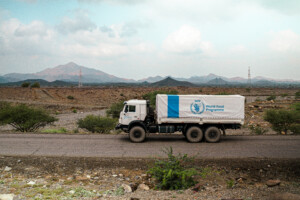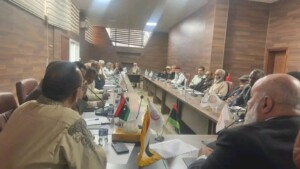Sudan OCHA bulletin 50: 5,900 South Sudanese arrive in South Kordofan
About 5,900 South Sudanese refugees arrived in South Kordofan’s El Leri and Abu Jubaiha localities between July and September, the UN Office for the Coordination of Humanitarian Affairs (OCHA) in Sudan reports in its latest weekly bulletin.
There are now 24,400 South Sudanese refugees in South Kordofan state, according to the UN Refugee Agency (UNHCR).
About 5,900 South Sudanese refugees arrived in South Kordofan’s El Leri and Abu Jubaiha localities between July and September, the UN Office for the Coordination of Humanitarian Affairs (OCHA) in Sudan reports in its latest weekly bulletin.
There are now 24,400 South Sudanese refugees in South Kordofan state, according to the UN Refugee Agency (UNHCR).
An inter-agency mission visited the two localities between 8-18 November mission, following Humanitarian Aid Commission (HAC) reports of the arrival of a large number of refugees.
Not many livelihood opportunities are open to the refugee population, especially in El Leri locality where local communities depend on traditional gold mining, OCHA reports. The situation is better in Abu Jubaiha locality, where most of the locals rely on agriculture for their livelihoods and refugees can find work as agricultural labourers. South Sudanese refugees also find work as food and tea makers in the market, as labourers in the mines, farms and houses, or collect charcoal and wood to sell.
Aid organisations are working on a response plan to assist both the new and old refugees in the two localities.
According to UNHCR, 198,707 South Sudanese have arrived in Sudan as of 9 December. 124,290 of them have received some form of humanitarian assistance.
Assistance reaches 37,000 people in Fanga Suk
The International Organization for Migration (IOM) verified that 36,984 people are in need of assistance in the area of Fanga Suk in Jebel Marra.
Aid organisations have already started to respond to the needs. The Sudanese Red Crescent Society (SRCS) has distributed food rations donated by the WFP to 17,875 people.
Unicef and the government Water and Sanitation Department (WES) are currently developing a response plan to address water shortages and sanitation needs. The WHO plans to construct a health centre in partnership with the Central Darfur's Ministry of Health.
Response for 13,700 returnees starts in Labado village
Aid organisations in East Darfur started responding to the needs of 13,700 people who returned to Labado village between September and November this year.
In response, the WHO and the East Darfur Ministry of Health sent medicines to the Labado clinic. Unicef has provided a midwifery kit to perform an average of 50 normal deliveries. Unicef and the Health Ministry will send a refrigerator for storing vaccines to the clinic.
For sanitation assistance, the international organisation Tearfund is expected to construct 485 latrines between December 2015 and January 2016.
Qatar contributes $70 million for model villages in Darfur
Qatar will contribute $70 million to construct ten model villages (two for each state) in Darfur in 2016.
According to the chairman of the Darfur Regional Authority (DRA), Qatar has so far spent $500 million on the construction of 315 projects, including schools, police stations, and clinics, across Darfur.
On 8 December, Qatar, Sudan and the UN Development Programme (UNDP) signed an agreement for the implementation of the six-year Darfur Development Strategy (DDS). The DDS will focus on reconstruction, governance, justice and reconciliation, and economic recovery. The UNDP has already received $10 million of the $88.5 million pledged by Qatar.
Crop and food supply assessment in Central Darfur
On 7 December, the annual Crop and Food Supply Assessment Mission (CFSAM) started their assessment of the 2015 harvest and livestock conditions in Central Darfur.
Aid organisations are concerned that people living in Zalingei, Wadi Salih, Mukjar, and Um Dukhun localities may soon not have reliable access to food because of the long dry spell from late August to late September, caused by El Niño. As a result, these locations are likely to face a 20 to 40 percent decline in their harvest yields compared to 2014.
As in South Darfur, there has also been an increase in incidents between herders and farmers. Because of poor pasture for grazing, pastoralists have started moving their herds into valleys for grazing in November—which is earlier than usual. This early migration has led to conflict with farmers when livestock graze on crops.
Child protection and nutrition services benefit 89,400 people in Blue Nile
Save the Children-Sweden and the Sudanese Alam Organisation for Rehabilitation and Development are implementing child protection and nutrition projects in six villages in Blue Nile’s El Roseires and Ed Damazin localities since November.
The projects target 74,516 people with nutrition services (including 33,573 children) and 14,900 people with protection services (including 6,300 children).
Many parts of Blue Nile State have been inaccessible to aid organisations, which puts many vulnerable people who need humanitarian assistance at risk.
Read the full OCHA bulletin here











 and then
and then